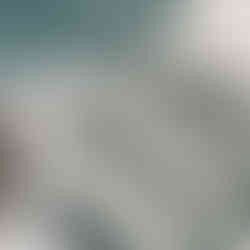So... What is a collagraph print and how do you print your pebbles? Do you slice up rocks?
- Su France
- Oct 23, 2022
- 4 min read
Updated: Dec 6, 2024

The collagraphs I create celebrate elements of nature which have textures I want to emulate. They may also have a quality of line or colour I wish to represent. Collagraph helps me do this in a different way than other the printmaking methods I use.
Collagraphy is a wonderful printmaking technique, where materials are glued onto mount board or another hard flat material such as wood. Kolla is from a Greek word meaning to glue or stick whereas 'graph' links to the verb to write/draw/mark-make, so basically when I create a print using the collagraph technique I'm sticking materials to produce printed marks.

This technique is one I now frequently return to, currently with an aim to show some of my precious beach pebbles. It also takes me back to the simplicity of cut and stick, and like many printing reveals, you never know quite what you'll get until that first pull from the print bed. My dad has a keen interest in geology. Studying more deeply during his retirement but having an avid interest in all things linked to tectonic plates and how particular rocks types were originally formed. Some of this geological interest has obviously rubbed off!
Firstly, I draw pebble shapes, some are from my imagination and come fluidly. I also have some specimens next to me, which link me to place and so are evocative of windy days in Scotland, with inky clouds threatening, or the huge skies found in Lincolnshire on days where seascapes fill our view.
At times I have combined my collagraph prints with other designs such as intaglio printing directly from seaweed or dried hornwrack.


Mountboard can be easily scraped, cut and scratched into, to create depth and interesting textures.
It can be tough on your hands cutting out the pebble shapes, but its worth it!
I use scalpels, pencils, steel wool, wire brushes, or tools I use to carve wax when jewellery making and well..... anything which produces marks! You can buy specialist tools from printing supply companies if you have deeper pockets that me!

Next, I glue on interesting material, with low relief, to replicate the textures I notice on the stones.Sedimentary stones, with their lovely stripy outfits provide great inspiration and I am also excited by stones with quartz lines.
I spend time on the shore lining these up and although I am not a fan of tasks like jigsaws I find it almost meditative at home to find different ways of linking the stones together lining up my pebbles or making organic circles, seeing it like the best kind of creative puzzle.
I stick on materials such as:
card,
textured ribbons,
scrim (tarlatan)
any interesting found textures on discarded packaging.
pencil shavings
string
dried botanicals
carborundum grit

These textured materials are then trapped under the surface of some aluminium foil. It's at this point I run it through my etching press for the first time as it compresses the materials together.

I use varnish to protect the collagraph plates, as I can then use the plates (the surface I am transferring the image from) multiple times when I'm creating new compositions or inking up for the printing process. I take photos of the compositions I prefer, so I have a quick reference, once I have inked them up.


Safe wash inks are then employed, which can be washed off with soap and water, rather than the need for harmful chemicals so it is a non-toxic inking application and clean up.
Ensuring the ink is firmly pressed into each crevice, crack and textured line is imperative so brushes and flexible material such as recycled labels are all utilised to push the ink in. I then polish some of the ink off and its this that takes experience- not too much or too little - Goldilocks would be impressed!
Inking up can be a messy job and I usually wear gloves but can get a little overexcited and forget to put them on!
Deep, inky blue is my favourite nail varnish colour!

Here I am with my 'lodger'- the name I gave my Gunning etching press, which has simply stuck and below is a little glimpse of a pebble collagraph print, with its first reveal, the most exciting part of the whole process, for me.

I produce collagraph images such as this one and am always impressed with the deep deboss that the rollers create, pressing into my dampened, non-bleached, environmentally friendly papers. The pebble prints are always best sellers at fair, where visitors and myself share stories of favourite places to hold these sea tumbled treasures.
One customer, at a recent fair, told me that they thought the printed stones look like 'they are enticing you to hold them, tumble their pebbly, textured shapes in your hand.'
I couldn't have wished for a better response.
You might also wish to read this post on collagraph printing linked to 'field marks.'
Take a look at the collagraph pebble prints currently available on my website, now that you know that I do not make them by slicing up rock, which was a genuine question at a fair and one which, given my artistic aim of linking to place, achieving interesting, authentic looking textures was a welcome compliment.


















